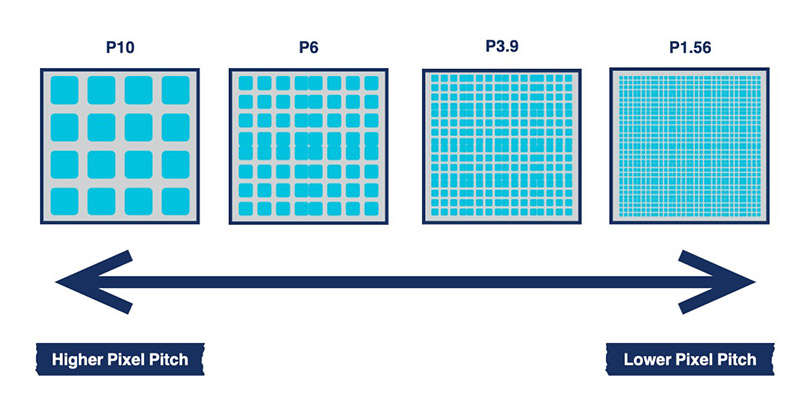How Does Pixel Pitch Affect Picture Quality?

Pixel pitch is one of the key determinants of picture quality for an LED display. The term refers to the distance between the centers of two adjacent pixels, measured in millimeters usually. Here is how pixel pitch impacts picture quality:
1. Resolution and Clarity: A smaller pixel pitch means more compact pixels; therefore, their density is higher. The sharper an image or video can be on any given display, the larger this density. If the pixel pitch is large in size, there will be fewer pixels per unit area, and thus there will be more apparent pixelation and hence reduced clarity of the image.
2. Viewing Distance: Correct pixel pitch is determined by the intended viewing distance. For displays viewed at close range - as in the case of indoor screens or small signage - the pixel pitch needs to be small in order not to lose the sharpness of the image. In larger displays that are to be viewed from some distance, a larger pixel pitch can be used without any perceived degradation in image quality.
3. Smoothness of the Image: With a low pixel pitch, an image will be rather smooth and continuous. This is due to the fact that these gaps between the pixels will be much less noticeable. Such uniformity is critical for applications like broadcast studios, control rooms, and high-end retail displays where display picture quality needs to be very fine.
4. Content Detail: Fine details in the content, like text and detailed graphs, can be very well served by a small pixel pitch. High pixel density will ensure clarity and readability for the presentation with these fine details; this is very important in presentations, detailed maps, and other information - rich display applications.
5. Cost Issues: The smaller the pixel pitch, the greater the number of LEDs required, hence their price. There is, therefore, a need to balance resolution against cost in terms of up-front investment and value for money in the long run.
As such, this would affect the resolution of the LED display, its clarity, viewing distance suitability, smoothness of the image, and detail of the content. Choosing the correct pixel pitch is very important to ensure the best possible picture quality and for the display to achieve the intended purpose.
- Previous Article:The Benefits of Milestrong's LED Display Screens
- Next Article:The Perfect Customized Solution for Dome LED Display from Milestrong



